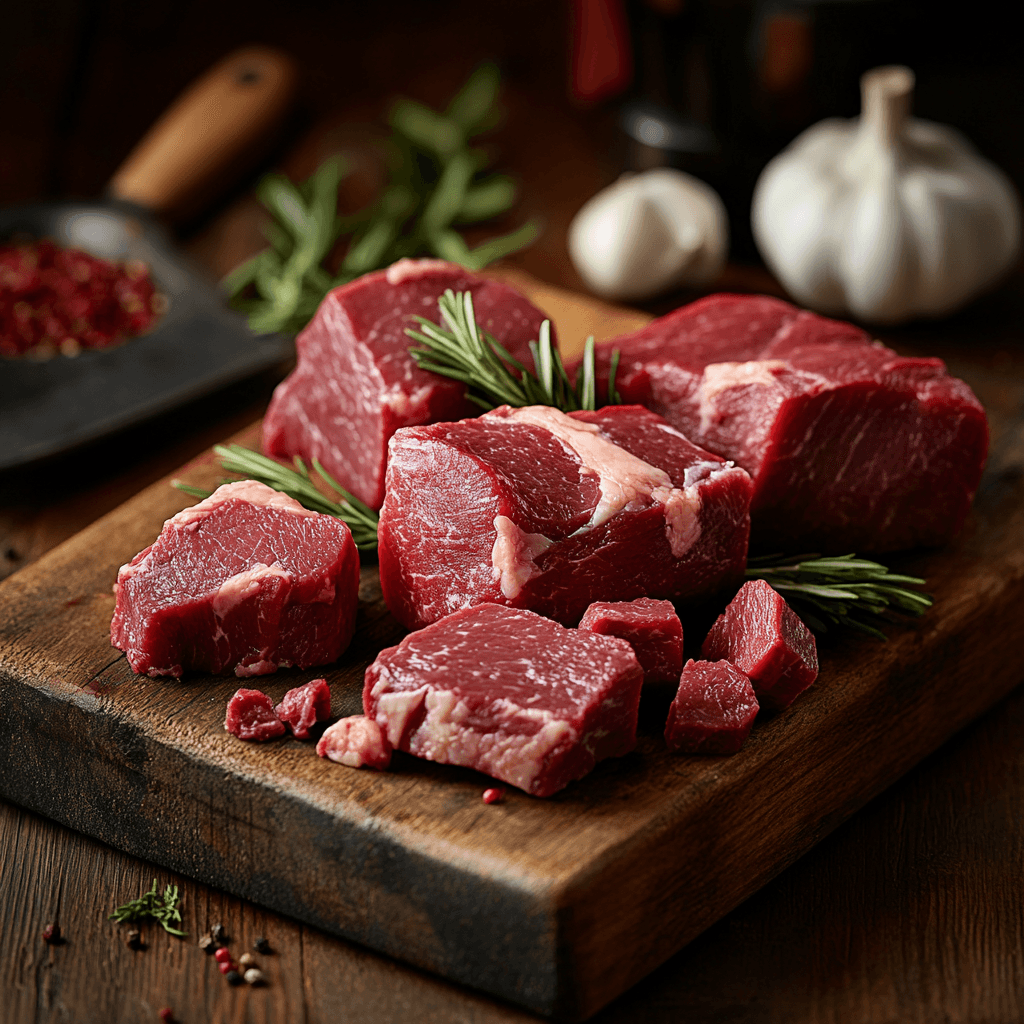Choosing the best cut of venison can feel like a mystery, but understanding the basics will transform your cooking. Whether you have a whole deer to process or you’re at a specialty butcher, knowing which cut to use for which dish is the secret to unlocking this incredible meat’s full potential. This guide will walk you through the top cuts, from the most tender to the most flavorful, ensuring you always make the perfect choice for the best cut of venison.
1. The Tenderloin & Backstrap: The Absolute Best Cuts of Venison
Often considered the pinnacle of venison, these two cuts are prized for their extreme tenderness. They have very little fat or connective tissue, meaning they are best cooked quickly with high heat. We explore this principle in our guide, [The #1 Myth About Cooking Venison].
- Best for: Searing, grilling, pan-frying, or for luxurious dishes. Overcooking is the biggest enemy here.
- Cooking Tip: Cook to rare or medium-rare. A simple seasoning of salt and pepper is all you need. For the ultimate tenderloin recipe, see our guide to making a [Gordon Ramsay Venison Wellington].
2. The Sirloin & Rump: The Versatile Roasters
Located at the top of the hind leg, the sirloin or rump is a fantastic, versatile cut. It’s leaner than the equivalent beef cut but still tender enough for roasting whole. This is arguably the best cut of venison for a classic Sunday roast.
- Best for: Roasting whole, cutting into thick steaks, or slicing into medallions.
- Cooking Tip: Roast in a hot oven but be careful not to dry it out, as it’s very lean. A bacon wrap or frequent basting can help retain moisture. Always use a meat thermometer and aim for medium-rare.
3. The Round & Leg Cuts: The Steak and Stew Stars
The hind legs provide large, lean muscles known as the top and bottom round. While not as tender as the backstrap, these cuts have a deep, rich flavour. They can be sliced into steaks for marinating and grilling or cubed for other dishes. This is a great choice when you need a good, but not the absolute best cut of venison.
- Best for: Marinated steaks, schnitzel (when pounded thin), or cubing for casseroles and stews.
- Cooking Tip: If cutting into steaks, a marinade with an acidic component (like vinegar or citrus) can help tenderize the meat before it hits the grill. For stews, a couple of hours of simmering will make it tender.
4. The Shank & Neck: Best for Slow Cooking
These are the toughest cuts, full of connective tissue and sinew. Do not try to grill a shank steak—you’ll regret it. However, when cooked low and slow, that connective tissue breaks down into incredibly rich, flavorful gelatin. This makes it the best cut of venison for braising.
- Best for: Slow cookers, braising, Osso Buco-style dishes, and rich stews.
- Cooking Tip: Braise for several hours in a flavorful liquid like red wine and stock until the meat is literally falling off the bone. This is where patience pays off handsomely.
5. The Shoulder (Chuck): The All-Purpose Workhorse
The shoulder gets a lot of work, so it’s a tougher cut, but it’s also packed with flavour. It’s a fantastic all-rounder that can be used for a variety of dishes. Many hunters consider this the secret best cut of venison due to its flavour-to-cost ratio.
- Best for: Slow-roasting, dicing for casseroles, or mincing for burgers and sausages.
- Cooking Tip: If roasting, use a low temperature for a long time to break down the muscle fibers. This is the cut to use if you want to impress with a pulled-venison dish.
By understanding these key cuts, you’ll never waste a piece of this magnificent game meat again. Now that you know the best cut of venison for a showstopper, you’re ready to tackle the ultimate recipe: our [foolproof Gordon Ramsay Venison Wellington].



